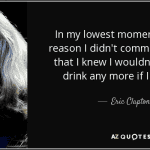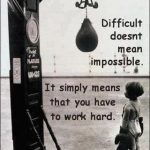Introduction
The Charleston Town Center Mall, once a bustling symbol of urban modernity, now stands as a relic of shifting economic tides and contentious urban planning. Its story is deeply intertwined with the erasure of Charleston’s historic Triangle District—a vibrant, multi-ethnic neighborhood. Additionally, the complex ownership saga of its parking garages has become a microcosm of the mall’s decline. This blog post traces the mall’s origins on the ashes of the Triangle District and examines the fraught relationship between the mall and its parking infrastructure. Furthermore, it reflects on the consequences of urban renewal policies.

The Triangle District: A Lost Community
Before the Charleston Town Center Mall occupied 26 acres of downtown Charleston, the area was part of the Triangle District, a thriving neighborhood defined by its cultural diversity. Bordered by the Elk River, Slack Street, and Washington Street, the Triangle was home to African Americans, Jewish immigrants, and Middle Eastern families. They built a self-sustaining community in the early 20th century. At its heart was “The Block”, a bustling commercial and cultural hub featuring the Ferguson Hotel—a Black-owned architectural marvel. This hotel hosted icons like Louis Armstrong and Ella Fitzgerald. The district’s businesses, churches, and theaters thrived despite segregation, creating a unique cultural identity.
This all changed in the 1960s. Charleston’s Urban Renewal initiatives labeled the Triangle a “slum” and razed it to make way for the “Super Block”, a vacant lot intended for redevelopment. The displacement of residents and destruction of heritage were justified as progress. However, critics argue it was a discriminatory act that erased a marginalized community to prioritize commercial interests. By the 1980s, the Super Block became the foundation for the Charleston Town Center Mall, a $100 million project. This was championed by Mayor John Hutchinson as a way to revitalize downtown retail.

The Mall’s Rise and the Parking Garage Puzzle
When the Charleston Town Center opened in 1983, it was hailed as the largest downtown mall east of the Mississippi River. It featured 130 stores, a three-story waterfall, and skylit passageways. Critical to its design were two federally funded parking garages, financed by $14 million in grants. These connected to the adjacent Marriott Hotel and aimed to ease downtown congestion. These garages, however, were not owned by the mall’s developers. Instead, the Charleston Building Commission held ownership, while the land beneath them was leased from the Charleston Urban Renewal Authority (CURA). This separation of ownership—garages under the Building Commission, land under CURA, and the mall under private developers—planted the seeds for future conflict.
Initially, the garages supported the mall’s success, offering convenient access to shoppers. But as the mall declined in the 21st century, so did garage revenue. By the 2020s, the mall’s tenant count plummeted from 130 to 41 stores. Anchors like Macy’s and Sears closed or were demolished. Reduced foot traffic meant fewer parking fees, leaving the garages in disrepair and $12–15 million in debt. A 2025 petition revealed that CURA had not received rent for years, and deferred maintenance had turned the structures into hazards.
The Garage Ownership Crisis
The garages’ financial collapse stemmed from their legal and operational fragmentation. While CURA owned the land and the Building Commission operated the garages, the mall’s private owners (most recently Hull Property Group) were responsible for leasing and maintenance . As the mall faltered, Hull failed to renew leases or attract tenants. This exacerbated the garages’ revenue shortfall . By 2024, a Kanawha County judge ordered the garages into receivership. An auction was scheduled to recoup losses for bondholders . Potential bidders included Hull, the Capital Sports Center developers, and nearby hotels. However, experts doubted the sale would cover the debt.
Public resentment over parking fees further alienated shoppers. Patrons criticized the $5 daily rate increase in 2025. They argued it drove business to suburban malls like Southridge with free parking . Commenters on social media lamented the garages’ decay. One former security guard noted, “chunks of concrete [were] falling from the ceilings” . The garages, once a pillar of the mall’s convenience, became a symbol of its mismanagement.
Conclusion: A Cautionary Tale of Urban Renewal
The Charleston Town Center Mall’s trajectory—from urban renewal showpiece to a hollowed-out shell—reflects broader trends in retail and city planning. Its construction erased a culturally rich neighborhood and replaced it with a space that prioritized consumerism over community. The parking garage debacle underscores the risks of fragmented ownership and underfunded infrastructure in public-private partnerships.

As Charleston pivots to repurpose the mall into a sports complex and mixed-use space, the lessons are clear: sustainable urban development requires honoring historical legacy, ensuring equitable revenue models, and fostering adaptable spaces. The Triangle District’s story, though largely forgotten, serves as a reminder of what is lost when progress is pursued without regard for people and place.
Bibliography
- “Charleston Town Center.” e-WV: The West Virginia Encyclopedia. 14 February 2025. Accessed 23 May 2025. https://www.wvencyclopedia.org/entries/1067.
- “Charleston Town Center Parking Garages to Be Auctioned Off This Spring.” WV MetroNews. 29 January 2024. Accessed 23 May 2025. https://wvmetronews.com/2024/01/29/charleston-town-center-parking-garages-to-be-auctioned-off-this-spring/.
- “Petition Says Town Center’s Struggles Have Had ‘Devastating’ Impact on Garages, Seeks Transfer of Control.” WCHS-TV. 21 May 2025. Accessed 23 May 2025. https://wchstv.com/news/local/petition-says-town-centers-struggles-have-had-devastating-impact-on-garages-seeks-transfer-of-control.
- “Charleston Town Center.” Wikipedia. Accessed 23 May 2025. https://en.wikipedia.org/wiki/Charleston_Town_Center.
- “What Is Next for the Charleston Town Center Mall?” WCHS-TV. 23 May 2025. Accessed 23 May 2025. https://wchstv.com/features/eyewitness-news-investigates/charleston-town-center-mall.
- “The Parking Garages on Quarrier and Lee St. That Connect…” Facebook. Accessed 23 May 2025. https://www.facebook.com/13news/posts/the-parking-garages-on-quarrier-and-lee-st-that-connect-to-the-charleston-town-c/1073694601461318/.
- “The Charleston Town Center Is One of the Largest Enclosed…” Facebook. Accessed 23 May 2025. https://www.facebook.com/john.k.valencourt/posts/the-charleston-town-center-is-one-of-the-largest-enclosed-shopping-malls-in-the-/8781764351860590/.
- Bumgardner, Stan. “Charleston’s Triangle District.” e-WV: The West Virginia Encyclopedia. 24 April 2024. Accessed 23 May 2025. https://www.wvencyclopedia.org/entries/2375.
As always, thank you for riding with me!
https://youtu.be/7nF0EUDTmUg
/run/user/1000/gvfs/smb-share:server=192.168.12.154,share=video/Video Workspace/5-17-2025/aRideWithMe5-23-2025.mkv
Visibility: Cloudy / Rain
*GPS Coordinate Data Provided on bottom left corner with date and speed*
Destinations in West Virginia by appearance:
South Charleston
Dunbar
Institute
Cross Lanes
Nitro (10:00)
Saint Albans
Jefferson
US60/MacCorkle Avenue – Spring Hill – South Charleston (27:00)
Charleston (34:00)
Westmorland – Charleston (37:00)
Charleston Town Center Mall (44:30)
I64 – South Charleston (59:00)
US119/Corridor G – South Charleston (1:30:00)
Alum Creek (1:33:00)
US60/MacCorkle Avenue – Saint Albans (1:54:00)
Main Avenue – Nitro (1:57:30)
Scott Depot (2:09:00)
Teays Valley
Winfield
Eleanor
Eleanor National Guard Base / Winfield Lock and Dam (2:23:00)
Eleanor City Park (2:32:00)
Red House
Hometown
Plymouth
Bancroft
Poca (2:55:00)
Listen while you ride: My Spotify Playlists
https://open.spotify.com/playlist/5FI2WfzKqFIz5dD0BOA1iw?si=4f12084e12b247ec – Mix
https://open.spotify.com/playlist/5IWoDtlir7k6eww0PNVdGh?si=dca253ebf4e94ac1 – Chill
https://open.spotify.com/playlist/4TNiUuJHvogwtk7ZxWoOpl?si=d4594c2bf5ff4328 – Upbeat



